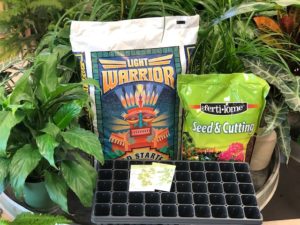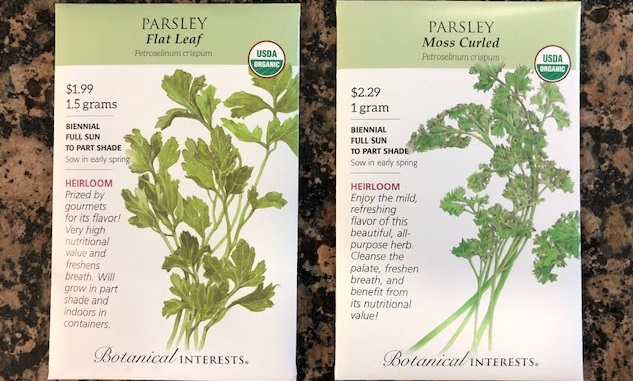Parsley is an essential in the herb garden. High in vitamin A and C, as well as calcium and iron, it is a biennial plant usually grown in Zones 5-9. Italian, or flat-leaf parsley, is used more in cooking while curly leaf parsley is used more as a garnish.
Many herb books include an adage about parsley going to the devil and back seven times before germinating. This obviously refers to the long germination time-often up to 6 weeks-which parsley requires!
Seed should be sown indoors about 6 weeks before the last frost date, or around mid-January in Central Texas. Using seeding trays with “cells” in them, prepare them with a light seeding mixture and moisten the soil before planting.

Because the seeds need to overcome a dormancy period before they will germinate, it helps to pour hot water over the seeds in a bowl and let them soak for 24-36 hours before planting. Pour off the water and drain them on a paper towel to make them easier to handle.
Spread 5-10 seeds on the surface of each cell and cover with 1/8” -1/4” of soil. Water them in, then cover the flat with a plastic bag open at one end to keep the soil moist. Check it often to maintain moist soil. Optimum soil temperature is 75° F., so use a heat mat if starting in a cooler environment. If you do not have a heat mat, place the flat on top of your refrigerator- but remember to check it often! When the first set of “true” leaves appear, thin the plants with snips, leaving the strongest plant to continue to grow. Do not “pull” the plants to thin them as that damages the root system of the remaining plant. At thinning time, you should remove the plastic bag and place the seed tray under fluorescent lights or in a bright window to continue to grow.
Because parsley does not transplant easily, be careful not to disturb the fragile root system when planting the transplants into the garden. Spacing should be about 12” apart, and parsley will appreciate afternoon shade in Central Texas.
Begin harvesting parsley when the stems are growing vigorously, snipping the older leaves off first.
Biennial plants flower and produce seed their second year of growth. Parsley has yellow flowers, similar to Queen Anne’s lace. The flowers attract butterflies and beneficial garden insects such as parasitoid wasps. After the plant has produced seed, you can harvest it to plant again next year.
